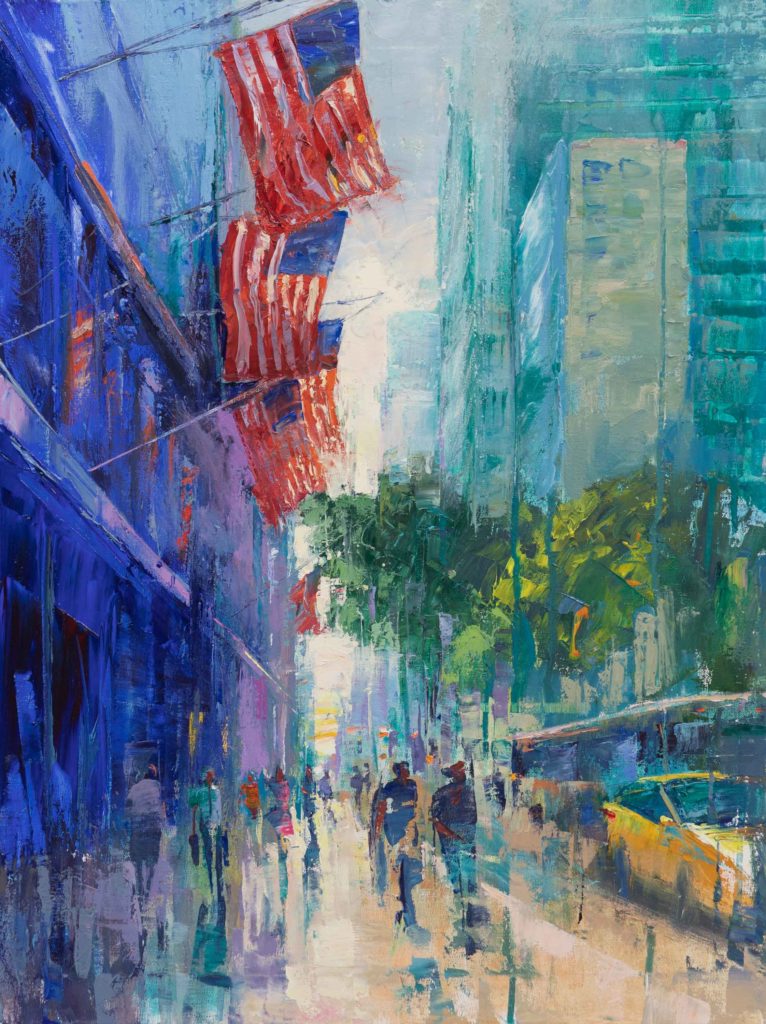Creative Home Art Ideas with Oil Paintings for Sale
Discovering Everything About Oil Paints: An Overview to Understanding Their Elegance and Value
Oil paints have actually astounded audiences for centuries, offering a glimpse right into the creative proficiency of various eras. Their rich background is intertwined with innovative techniques and extensive psychological expression. Recognizing the products and methods behind these art work can boost admiration. Additionally, the market for oil paintings offers possibilities for enthusiasts and investors alike. As one discovers this fascinating world, the concern arises: what makes an oil painting genuinely beneficial?
The History of Oil Painting: A Trip Via Time
Oil painting has origins that date back to old times, it really thrived throughout the Renaissance, when musicians uncovered its versatility and rich shade capacity. Early examples can be traced to the 7th century, with techniques developing notably throughout societies. The medium ended up being famous in Northern Europe in the 15th century, specifically with the works of musicians like Jan van Eyck, that originated its usage for thorough realistic look and dynamic shades. This duration marked a departure from tempera paints, allowing for greater depth and structure. As oil painting spread, it influenced many musicians, leading to masterpieces by prominent figures such as Leonardo da Vinci and Rembrandt. The tool's tradition proceeds, forming the art world well into modern-day times.
Comprehending Oil Repaints: Materials and Techniques
As musicians discover the globe of oil paints, they experience a varied array of materials and techniques that specify this tool. The key components of oil paint consist of pigments, which supply shade, and drying oils, such as linseed, that bind the pigments and promote application. Numerous ingredients can modify the paint's texture and drying time, boosting adaptability. Strategies like glazing, where clear layers are accumulated, and impasto, which involves applying thick paint, permit for various visual effects. In addition, making use of brushes, combination blades, and also fingers can develop one-of-a-kind appearances and finishes. Recognizing these methods and products makes it possible for musicians to completely express their imagination and attain the desired effect in their art work.
The Function of Shade in Oil Paints
Shade plays an essential duty in oil paintings, affecting both visual charm and psychological vibration. Comprehending shade concept basics, including the relationships in between colors, can enhance a musician's capability to share mood and environment. Furthermore, grasping shade mixing techniques enables higher deepness and richness in a paint's palette.

Color Concept Essential
Understanding shade concept is essential for artists dealing with oil paints, as it develops the structure for producing harmonious and aesthetically interesting compositions. Color concept incorporates the research of how shades communicate, the shade wheel, and the relationships between primary, second, and tertiary colors. Musicians make use of complementary colors to enhance contrasts and produce centerpieces, while analogous colors promote unity and cohesiveness within an item. Furthermore, the principles of cool and warm shades influence the assumption of depth and area in a paint. Grasping these principles allows musicians to control shade efficiently, directing the audience's eye and communicating their intended message. Proficiency of shade theory ultimately enriches a musician's capability to convey feelings and concepts via their job.
Emotional Influence of Color
The emotional effect of shade in oil paintings plays a critical role in exactly how customers link and view with art work. Colors stimulate details sensations and state of minds, influencing the visitor's mood. For example, cozy colors like oranges and reds can create a feeling of heat and energy, while amazing tones such as blues and environment-friendlies usually evoke peace or introspection. Artists purposefully choose color schemes to boost narrative components, leading the audience's psychological trip. The saturation and comparison of colors better enhance these effects, drawing focus and creating emphasis. Eventually, the interaction of colors in oil paints not just improves their visual allure however likewise functions as an effective medium for emotional expression, improving the visitor's experience and analysis.
Color Mixing Techniques
While numerous elements of oil painting contribute to the general structure, understanding color mixing techniques is necessary for achieving preferred results and depth. Color mixing can be approached via numerous approaches, consisting of the additive and subtractive procedures. Additive mixing entails incorporating shades of light, while subtractive mixing depends on pigments, where shades blend to develop brand-new shades. Musicians frequently utilize a minimal palette to create harmonious jobs, comprehending the relationships in between key, additional, and tertiary colors. Strategies such as glazing and scumbling better improve depth and luminance. By masterfully blending shades, a musician can evoke feelings, produce centerpieces, and attain a feeling of realism, inevitably raising the painting's visual and emotional impact.
Famous Oil Painters and Their Iconic Works

Renowned for their mastery of shade and method, oil painters have developed a few of one of the most well known artworks in background. Renowned artists like Vincent van Gogh astounded audiences with his emotive brushwork in "Starry Evening," while Claude Monet's "Impact, Daybreak" prepared for Impressionism. Leonardo da Vinci's "Mona Lisa" stays an enduring sign of imaginative brilliant, showcasing his skill in capturing human expression. Rembrandt's "The Night Watch" highlights his cutting-edge usage of light and shadow. Other remarkable numbers include Pablo Picasso, that revolutionized modern art with his bold trial and error in jobs like "Les Demoiselles d'Avignon," and Georgia O'Keeffe, whose dynamic representations of landscapes and blossoms aided define American modernism. Each musician's distinct design added substantially to the oil painting landscape.
Just how to Review the High Quality of an Oil Painting
Evaluating the quality of an oil paint includes a mindful evaluation of craftsmanship methods, along with an analysis of color and structure. Observing brushwork, layering, and the application of paint can expose the musician's ability degree. In addition, the interaction of colors and the general plan of components add significantly to the paint's aesthetic worth.
Evaluating Workmanship Techniques
A meticulous assessment of workmanship methods is essential for figuring out the high quality of an oil painting. Critics need to first check out the application of paint; thick, distinctive brushstrokes might recommend a proficient hand, while extremely uniform applications could suggest an absence of deepness. oil paintings for sale. The layering method is likewise essential; the existence of lusters and differed density can improve luminosity and complexity. Additionally, the high quality of the materials made use of, such as the canvas and pigments, plays a substantial role in durability and overall visual. Attention to information in components like sides and shifts in between colors shows the artist's commitment to their craft. Inevitably, these strategies add to the paint's emotional impact and market worth, functioning as signs of the musician's skill and intent
Examining Shade and Structure
While reviewing the high quality of an oil painting, one need to focus on the interaction of shade and composition, as these elements are basic to the art work's overall effect. Shade options can develop and stimulate emotions mood; therefore, the artist's palette ought to be analyzed for harmony and comparison. A well-balanced make-up directs the viewer's eye and creates a feeling of unity. Artists commonly employ strategies like the policy of thirds or leading lines to improve aesthetic interest. Furthermore, making use of light and shadow can add deepness, improving the three-dimensionality of the painting. Ultimately, a successful oil painting marries color and structure, engaging the customer and welcoming a deeper admiration of the musician's vision and method.
Caring for and Preserving Oil Paintings
Appropriate care and preservation link of oil paintings is vital for maintaining their honesty and long life. To protect these art work, it is important to show them away from straight sunlight, which can trigger fading and discoloration. Maintaining a steady setting with regulated temperature level and humidity additional aids in avoiding damage. Cleaning up need to be done gently using a soft, dry towel, staying clear of any kind of severe chemicals that could hurt the look at more info paint or varnish. Normal examinations for signs of deterioration, such as breaking or flaking, are advisable. When keeping or carrying oil paints, correct padding and framework are needed to prevent physical damage. Inevitably, thorough treatment contributes to the visual charm and value of oil paints over time.
The Market for Oil Paints: Gathering and Spending
Understanding the market characteristics for oil paintings is essential for investors and collection agencies alike. The worth of these artworks is influenced by various variables, including the artist's credibility, historical importance, and present fads. Enthusiasts typically look for items that resonate personally while thinking about prospective appreciation in value. Public auctions and galleries work as primary places for trading, with rates fluctuating based on need and rarity. Purchasing oil paintings needs research right into the marketplace, in addition to an understanding of authenticity and provenance. Additionally, arising musicians may offer possibilities for significant returns, while developed names can regulate high prices. On the whole, a tactical approach to accumulating can generate both aesthetic enjoyment and financial incentives.

Regularly Asked Concerns
What Are the Environmental Effects of Oil Paint Materials?
The ecological influences of oil painting products consist of the launch of unstable organic compounds (VOCs), dangerous waste generation, and source removal for pigments. These read more elements add to pollution and environmental destruction, increasing problems among environmentally conscious musicians and customers.
Exactly How Do Various Canvases Affect Oil Painting Results?
Different canvases influence oil painting results significantly. Texture, absorbency, and surface area high quality can modify paint application, drying times, and shade vibrancy. Artists frequently select particular canvases to accomplish preferred results and boost their imaginative expression.
Can Oil Paintings Be Brought Back if Harmed?
If damaged, Oil paints can undoubtedly be restored. Expert conservators utilize different techniques to repair splits, tidy surface areas, and address staining, making sure that the art work retains its original charm and value for future generations.
What Are the Signs of an Initial Oil Painting?
The signs of an initial oil painting include noticeable brush strokes, structure variants, and an irregular canvas weave (oil paintings for sale). Furthermore, authenticity may be validated via provenance, signatures, and the visibility of a varnish layer special to oil mediums
Just How Has Innovation Influenced Modern Oil Paint Techniques?
Innovation has greatly influenced modern-day oil paint methods by introducing digital tools for preparation, enhanced materials for texture and durability, and on-line systems for selling and sharing art, consequently expanding musicians' creative possibilities and audience get to. Oil paint has origins that date back to old times, it truly prospered throughout the Renaissance, when musicians found its convenience and rich color potential. The psychological effect of color in oil paintings plays an important function in just how audiences connect and regard with art work. While numerous facets of oil paint add to the total make-up, mastering shade blending strategies is crucial for achieving wanted impacts and deepness. Reviewing the high quality of an oil painting includes a cautious evaluation of workmanship techniques, as well as an evaluation of shade and composition. While examining the quality of an oil painting, one should concentrate on the interaction of shade and structure, as these aspects are basic to the art work's general influence.